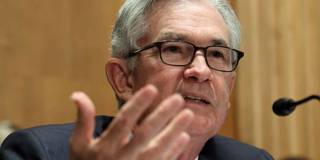With growth so uncertain, it is understandable that central banks would be wary of beginning to taper monthly bond purchases before it is clear that inflation has taken off. But they would do well to recognize that prolonging quantitative easing implies significant risks, too.
CHICAGO – Inflation readings in the United States have shot up in recent months. Labor markets are extremely tight. In one recent survey, 46% of small-business owners said they could not find workers to fill open jobs, and a net 39% reported having increased their employees’ compensation. Yet, at the time of this writing, the yield on ten-year Treasury bonds is 1.24%, well below the ten-year breakeven inflation rate of 2.4%. At the same time, stock markets are flirting with all-time highs.
Something in all this does not add up. Perhaps the bond markets believe the US Federal Reserve when it suggests that current inflationary pressures are transitory and that the Fed can hold policy interest rates down for an extended period. If so, growth – bolstered by pent-up savings and the additional government spending currently being negotiated in Congress – should be reasonable, and inflation should remain around the Fed’s target. The breakeven inflation rate also seems to be pointing to this scenario.
But that doesn’t explain why the ten-year Treasury rate is so low, suggesting negative real rates over the next decade. What if it is right? Perhaps the spread of the COVID-19 Delta variant will prompt fresh lockdowns in developed countries and damage emerging markets even more. Perhaps more nasty variants will emerge. And perhaps the negotiations in Congress will break down, with even the bipartisan infrastructure bill failing to pass. In this scenario, however, it would be hard to justify the stock-market buoyancy and breakeven inflation rate.

CHICAGO – Inflation readings in the United States have shot up in recent months. Labor markets are extremely tight. In one recent survey, 46% of small-business owners said they could not find workers to fill open jobs, and a net 39% reported having increased their employees’ compensation. Yet, at the time of this writing, the yield on ten-year Treasury bonds is 1.24%, well below the ten-year breakeven inflation rate of 2.4%. At the same time, stock markets are flirting with all-time highs.
Something in all this does not add up. Perhaps the bond markets believe the US Federal Reserve when it suggests that current inflationary pressures are transitory and that the Fed can hold policy interest rates down for an extended period. If so, growth – bolstered by pent-up savings and the additional government spending currently being negotiated in Congress – should be reasonable, and inflation should remain around the Fed’s target. The breakeven inflation rate also seems to be pointing to this scenario.
But that doesn’t explain why the ten-year Treasury rate is so low, suggesting negative real rates over the next decade. What if it is right? Perhaps the spread of the COVID-19 Delta variant will prompt fresh lockdowns in developed countries and damage emerging markets even more. Perhaps more nasty variants will emerge. And perhaps the negotiations in Congress will break down, with even the bipartisan infrastructure bill failing to pass. In this scenario, however, it would be hard to justify the stock-market buoyancy and breakeven inflation rate.